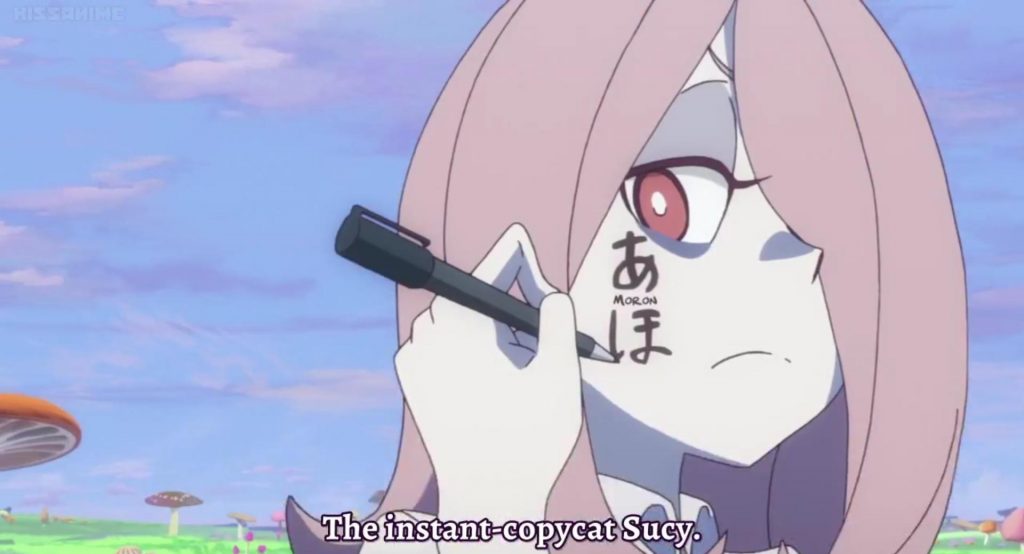Overall, LWA tends to be episodic but with “Sleeping Sucy”…
Little Witch Academia (LWA) follows the story of Akko, a young girl not born to a witch’s family who wants to become a witch like Chariot, her childhood idol. A typical episode centers on Akko confronting situations that put her (lack of) magical abilities to the test. Overall, LWA tends to be episodic, following a pattern of repetition and variation as Akko solves problems that last a single episode and demonstrates her value as a witch to her peers, professors, or an outside party.

LWA episode 8 (“Sleeping Sucy”), however, breaks from the usual episode construction for the explicit purpose of creating a new lens into the Sucy’s inner conscience, without providing any insight into Sucy’s past.
For most of “Sleeping Sucy,” it is just Akko and Sucy, with an occasional reminder of the panicked Lotte in the ‘real world.’ The episode itself takes place not on the grounds of Luna, or even the neighboring town – it is within the mysterious confines of Sucy’s mind. By putting the episode setting in Sucy’s headspace, LWA gives itself certain license to take more creative liberties in characterization, and the limits of what the world itself can do. Unlike Luna Nova, where the rules for how magic works are clearly defined, the mechanics of Sucy’s mind-world needs no explanation because it is a constructed dream space.
The change in construction frees the episode
The change in construction frees the episode to delve into blatant narrative and visual symbolism to develop the audience (and Akko’s) understanding of Sucy’s character, without revealing her past, as has been done with other characters, like Lotte. This narrative technique effectively brings the audience closer to Sucy’s character that we experience in the ‘real world,’ while still leaving room to provide insight as to Sucy’s past for potentially a later episode. Alternatively, this could be an intentional effort by director Yoh Yoshinari or episode screenplay writer Kimiko Ueno to maintain the audience’s (and possibly Akko and company’s) lack of knowledge as to Sucy’s past as an essential element of Sucy’s characterization.
The unhinged world of Sucy’s mind is a platform that allows for maximum creativity in how to present reflections of both the Sucy we know and what parts that Sucy knows. Reminiscent of a journey to Oz, as Akko tries to find the original Sucy, she changes between locations such as a yellow brick road, a death-row courtroom for undesirable Sucy’s, and a drive-in theater of Sucy’s memories. Akko finds the versions of Sucy who are acceptable (greed, sloth, mushroom-lover), and those not (the Sucy who wants to read Nightfall), who are quickly (and quite gruesomely) disposed of by a judge-version of Sucy.
“Sleeping Sucy” creates a break from the usual episode construction, while still keeping close one of essential elements that continues to draw back the audience week by week. Sucy’s character is shrouded in mystery, and by using the change of pace that this episode offers, the audience is granted a small glimpse, quite literally, into her head.
We don’t learn anything about Sucy’s past, but we learn about what she thinks of the friends and experiences that she has in the present. The sort of ‘gag’ of mushroom-loving semi-crazy Sucy can only go on for so long, and by giving the audience this confirmation of her emotional commitment to her friends and Luna Nova, this allows the audience to connect on a much deeper level with Sucy. We can now see her both as the Sucy that she presents to the world and the emotional being that exists within. We understand far better that yes, she loves to make trouble, and is very possibly a bit evil, but at her core, she loves Akko, Lotte, and her time at Luna Nova.